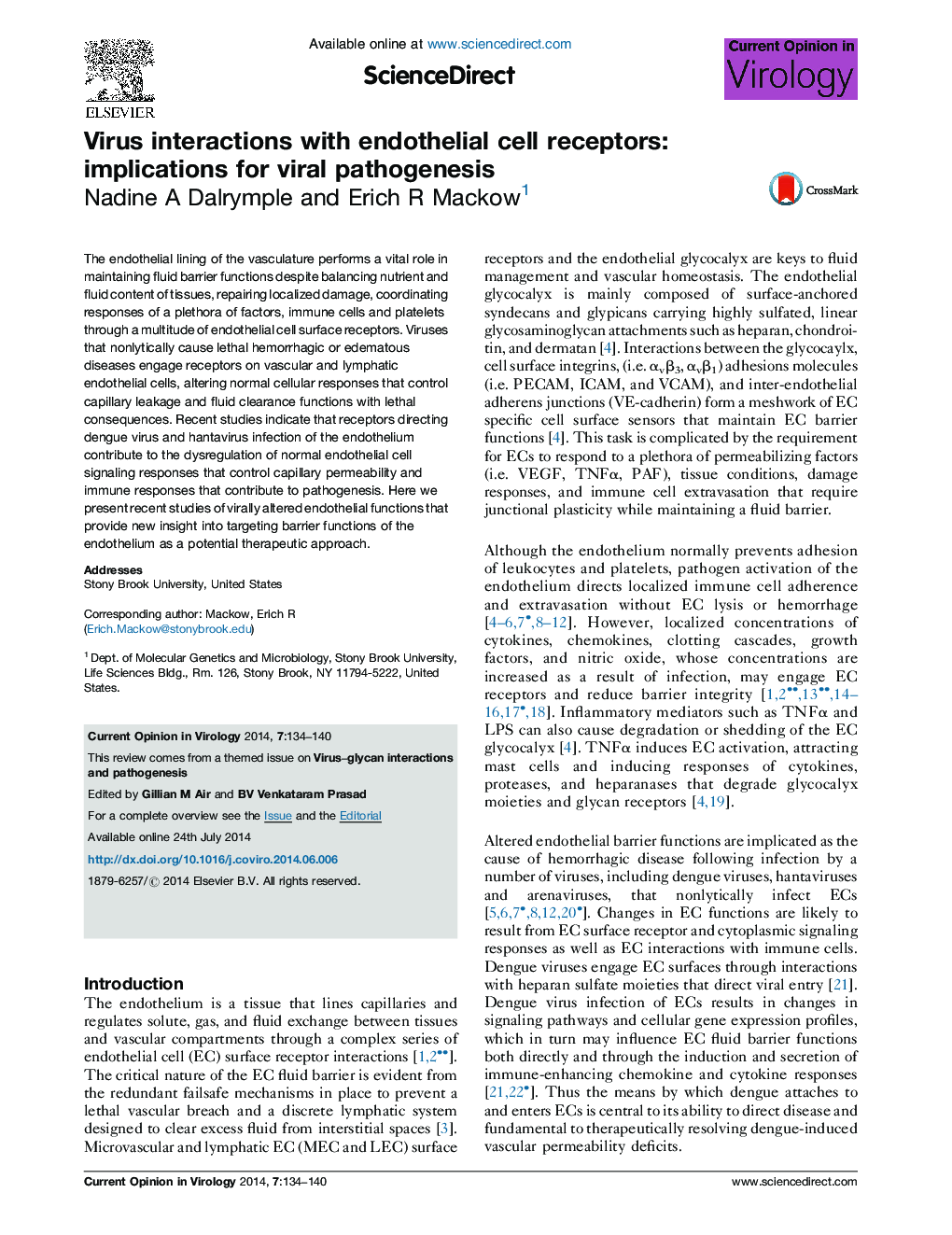| Article ID | Journal | Published Year | Pages | File Type |
|---|---|---|---|---|
| 2473301 | Current Opinion in Virology | 2014 | 7 Pages |
•Viruses that nonlytically cause vascular leakage infect the vascular and lymphatic endothelium.•Dengue infected ECs elicit immune enhancing chemokines and direct immune cell targeting of ECs.•Hantaviruses increase vascular permeability of AJs in response to VEGF signaling in MECs and LECs.•The endothelium is a therapeutic target for resolving hemorrhagic and edematous disease.
The endothelial lining of the vasculature performs a vital role in maintaining fluid barrier functions despite balancing nutrient and fluid content of tissues, repairing localized damage, coordinating responses of a plethora of factors, immune cells and platelets through a multitude of endothelial cell surface receptors. Viruses that nonlytically cause lethal hemorrhagic or edematous diseases engage receptors on vascular and lymphatic endothelial cells, altering normal cellular responses that control capillary leakage and fluid clearance functions with lethal consequences. Recent studies indicate that receptors directing dengue virus and hantavirus infection of the endothelium contribute to the dysregulation of normal endothelial cell signaling responses that control capillary permeability and immune responses that contribute to pathogenesis. Here we present recent studies of virally altered endothelial functions that provide new insight into targeting barrier functions of the endothelium as a potential therapeutic approach.
